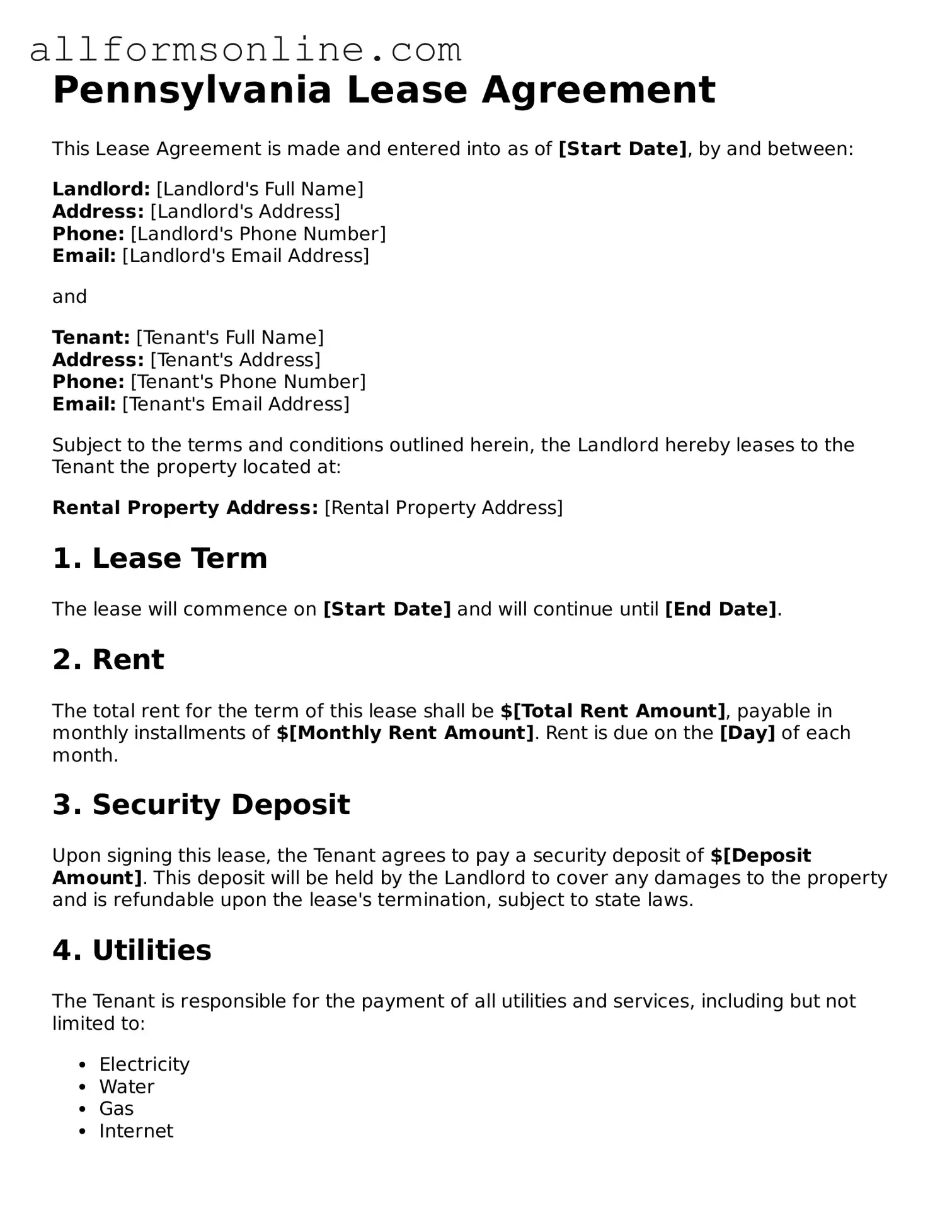What is a Pennsylvania Lease Agreement form?
A Pennsylvania Lease Agreement form is a legal document that outlines the terms and conditions under which a tenant rents property from a landlord. This agreement typically includes details such as the rental amount, duration of the lease, security deposit requirements, and responsibilities of both parties. It serves to protect the rights of both the landlord and the tenant, ensuring that each party understands their obligations during the lease term.
What are the essential components of a Pennsylvania Lease Agreement?
Essential components of a Pennsylvania Lease Agreement include the names of the landlord and tenant, the address of the rental property, the lease term (whether it is month-to-month or for a fixed period), the rental amount, payment due dates, and the security deposit amount. Additionally, the agreement should specify rules regarding maintenance, repairs, and any restrictions on the property, such as pet policies or subletting conditions.
Is a written lease agreement required in Pennsylvania?
While Pennsylvania law does not require a written lease for rental agreements that are less than one year, it is highly advisable to have one. A written lease provides clarity and helps prevent misunderstandings between the landlord and tenant. In cases where disputes arise, a written document can serve as crucial evidence in resolving those issues. For leases longer than one year, a written agreement is mandatory under Pennsylvania law.
How is the security deposit handled in Pennsylvania?
In Pennsylvania, landlords can require a security deposit, typically not exceeding two months’ rent for leases longer than one year. The law mandates that landlords must return the security deposit within 30 days after the lease ends, minus any deductions for damages or unpaid rent. If deductions are made, the landlord must provide an itemized list of these deductions. It is important for tenants to document the property’s condition upon moving in to avoid disputes later.
What happens if a tenant wants to break the lease early?
If a tenant wishes to break the lease early, they may face financial penalties as outlined in the lease agreement. Many leases include an early termination clause that specifies the conditions under which a tenant can exit the lease without incurring penalties. In some cases, tenants may negotiate with their landlord to find a mutually agreeable solution, such as subletting the unit or finding a replacement tenant. It is advisable for tenants to communicate openly with their landlords to discuss their options.
Are there any specific tenant rights in Pennsylvania?
Yes, tenants in Pennsylvania have several rights designed to protect them. These include the right to a habitable living environment, the right to privacy, and the right to receive proper notice before eviction. Tenants also have the right to report unsafe living conditions to local authorities without fear of retaliation. Understanding these rights is essential for tenants to advocate for themselves and ensure they are treated fairly by their landlords.
What should a tenant do if they experience issues with their landlord?
If a tenant experiences issues with their landlord, such as failure to make necessary repairs or unlawful eviction attempts, it is important to document all communications and incidents. Tenants should first attempt to resolve the issue directly with the landlord. If this does not yield results, they may consider seeking assistance from local tenant advocacy organizations or legal aid services. In some cases, tenants may need to pursue legal action, but this should be considered a last resort after all other options have been exhausted.
